This was published 5 years ago
Best islands for a holiday: Experts pick the best islands in the world
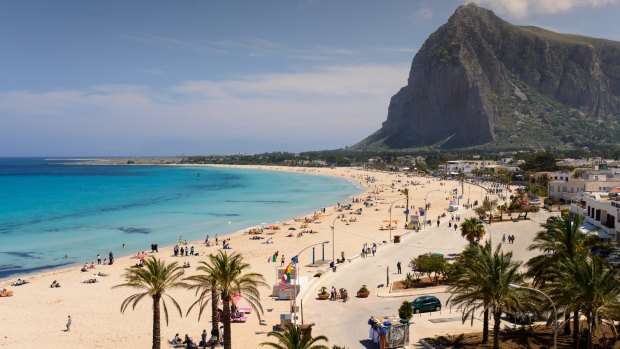
The town of San Vito lo Capo in Sicily. Credit: Massimo Calmonte
Nothing beats an island for getting away from it all. Floating in lonely splendour, removed from the relentless beat of mainland life, every island is a universe unto itself. On an island, you can get a break from the shock of the new. Life moves at a different pace, governed by the gentle rhythm of the waves that wash endlessly against the shore.
There are other reasons we love islands, of course. For one thing, they are often heartbreakingly beautiful. Few things are as reverie-inducing as a picture of a quintessential tropical island: palm trees, white sand, crystal-clear water, spectacular sunsets. So when we asked Traveller writers to nominate the island on which they would want to be marooned, naturally we received some paeans to Pacific paradises. Read on and you will find odes to islands with lush hidden valleys and proverbial blue lagoons, and tales of traditional tribal rituals conducted on island mountaintops.
You will also find celebrations of other types of islands. There are mist-wrapped northern islands, where the heather blooms purple and northern lights dance in the sky. There are islands rich in history, with grand cathedrals and tiny fishing villages, olive groves and ancient ruins. And there are islands that pulse with life, filled with neon, nightlife and soaring skyscrapers. One thing all these islands have in common: none of them could ever be described as an everyday experience.
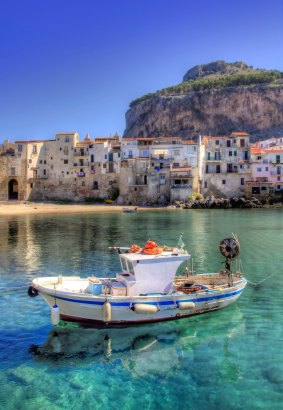
A boat moored in the port of Cefalu, Sicily.
SICILY
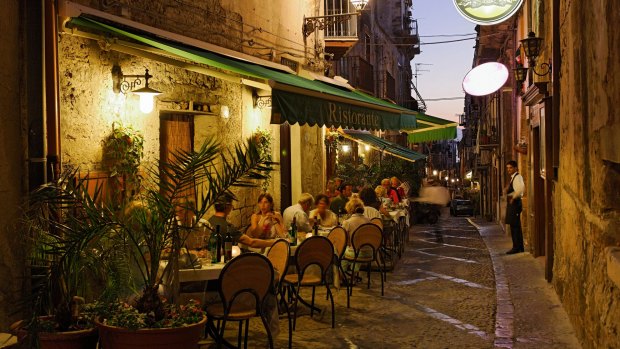
Credit: Alamy
By Ben Groundwater
If I were to be marooned somewhere, I would want the coffee to be good. I would also want a steady supply of good wine, a whole lot of restaurants serving amazing pasta dishes, and ready access to arancini, caponata, cannoli, and cold, sweet granita.
In other words, I would want to be marooned on Sicily.
I would seek no rescue from this island paradise. I would send up no flares. I would happily live out the rest of my days roaming the land and swimming in the sea, enjoying great food, drinking nice wine, wandering centuries-old villages and lying under umbrellas on pebbly sands.
Sicily isn't the standard version of an island dream. Instead of palm trees, there are olive groves. Instead of white-sand beaches there are places like Syracuse, ancient port towns whose stone walls abut the glistening Mediterranean. Instead of a paradisiacal idyll there's a buzz to Sicily, a feeling of everyone going places and doing things, a din punctuated by the shouts of fish sellers, the beep of scooter horns, the hubbub of streetside conversation and argument and joy.
The sun shines in Sicily, but it doesn't seem to burn. It just warms you to the core, like you're one of those arancini lined up in the pasticceria display.
Sometimes it gets too hot, but there's always the succour of siesta. And eventually that sun will set, leaving warm, sultry evenings, perfect for wandering streets whose pavings still bear the heat of the day, stopping to eat gelato from small stands, or maybe trying granita, the iced confection native to Sicily, or dining at a pavement restaurant on seafood, on pasta with sardines, on smoky caponata with grilled local swordfish.
There are hilltop villages in the interior of Sicily; buzzing seaside towns on the coast; old Greek and Roman ruins strewn haphazardly throughout. You stumble across tourist hotspots like Taormina, sleepy fishing ports like Marzamemi, bustling cities like Palermo and Catania.
And you meet so many people, friendly but hot-tempered, laid-back but always in a hurry. You soak up their culture, their love of family and of food, of pleasure and of passion, of lives that are lived for all that's good. You embrace it.
And you never want to leave. visitaly.com.au
See also: The most beguiling island in the Mediterranean
VELIGANDU ISLAND, THE MALDIVES
By Catherine Marshall
My dream island still lives so vividly in my imagination: a tiny, green-tufted cay marooned on an ocean so vast, so incomprehensibly blue, it hurt just to look at it. As our seaplane dipped over the islet – just a fistful of earth thrust upon the sea – we could see palm-thatched bures peeping through the trees, a spear of white sand stretching oceanwards from the island's crown, and the mottled turquoise waters ebbing away into a deep, impenetrable blue.
This was Veligandu, one of the scattering of islands – some of them uninhabited – that made up the North Ari Atoll in the Maldives. Even now, 20 years later, the mental image I have conjured of that island evokes for me the idea that remoteness and solitude can be beautiful things. It had taken three flights to get our little family there – four, if you included the extra stop we had to make to drop off passengers elsewhere in the atoll before reaching our island.
It was a trip that had come in the middle of a difficult year: back home, my mother had been diagnosed with cancer. Before the year was out, she would be gone. As I stepped onto the white sand rimming the island like a halo, I could feel the sorrows of the world slipping away.
Though there were other guests staying on Veligandu, we felt alone. We sat outside our bure, feet stretched out towards the water. We filmed endless sunsets on an antiquated video camera. We watched nurse sharks swimming in the lagoon. We circumnavigated the island by foot, an expedition that took less than 10 minutes. We smiled when our two-year-old son told us he'd been bitten by a shell; it was the hermit crab hiding inside it that had pinched him, of course.
There is no other place in the world I long to return to as much as I do Veligandu. It's the memories I'm after, of course, the sense of being marooned so far from the familiar, the weightlessness that such a sensation brings. I'll find it changed, of course, for the resort has been refurbished and bungalows now hover above the lagoon.
But the island is still as tiny as it ever was, the sand as white, the water as improbably blue. It's as good a place as any, I'd say, to be marooned. veliganduisland.com
See also: This fantasy paradise is like visiting another world
MANHATTAN, NEW YORK
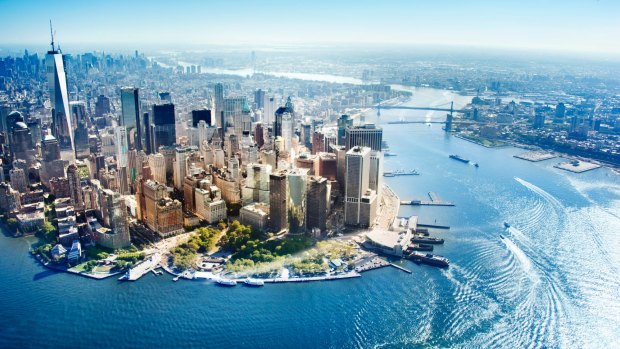
By Ute Junker
Some people crave the simple life. Strand them on an island with a sarong and a fishing line and they will happily settle into a routine of fresh fish, coconut water and being lulled to sleep by the sound of the waves washing against the shore.
Me, I require a few more creature comforts. Which is why, when it comes to islands, I'll take Manhattan. Sure, it has asphalt instead of sand, skyscrapers instead of palm-fringed bures, and the glow of the starlit sky pales when challenged by the neon glare. In just about every other respect, however, Manhattan leaves the classical tropical island for dead.
Why sign up for cocktails by the pool when you can hop from one cocktail bar to another? If it's pampering you're after, Manhattan's menu of indulgences puts any island spa to shame. This is, after all, the place that invented every busy woman's favourite quick fix, the martini-and-manicure combo.
In the mood for a long lazy walk? Forget wandering barefoot through the sand; there is no place I'd rather go for an aimless stroll than Manhattan. Whether you're meandering through the chaos of Chinatown, past the shop windows of Fifth Avenue or rising above it all on the High Line, this is a place where you can stroll for miles without noticing how far you have gone, where each corner brings something new to gaze at, gawp at or giggle over.
And then there's the food. If I'm going to be stuck on one island for the rest of my life, it had better be a place where I can satisfy any craving. Whether it's a fast bite at a food truck, noodles hand-rolled in front of your eyes, or a multi-course degustation at a white tablecloth restaurant – or all three in the same day – Manhattan has it covered.
Still not convinced? Then consider this: unlike most islands, Manhattan is wonderfully weather-proof. The charms of your average tropical island dim as soon as the sun goes behind a cloud; in Manhattan, bad weather is merely an excuse to explore the island's indoor attractions. Museums filled with treasures from ancient Egypt and imperial Russia, artistic masterpieces by Pollock and Picasso, Kandinsky and de Kooning; curtains rising in dozens of theatres stretching from Broadway to Off Broadway to Off Off Broadway … the choice is endless. And that is precisely why Manhattan is my personal paradise island: whatever else it may be, it is never boring. nycgo.com
See also: How to see the best of New York in just four days
KADAVU ISLAND, FIJI
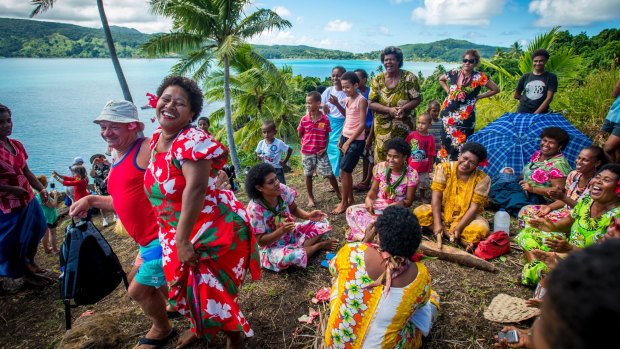
Credit: David Kirkland
By Katrina Lobley
Fiji's Kadavu Island, which dangles below the "mainland" of Viti Levu, cast its spell over me in the most improbable way – namely with the help of a turtle. As Captain Cook Fiji's MV Reef Endeavour anchored and dispatched us to the island via tender, we could see women in their jewel-coloured floral dresses and bare feet trailing up a mountainside, following a rough-hewn trail shaded by tipsy palms to a headland overlooking the cerulean waters.
We followed them. Up top, primal rhythms were being tapped out on a log, the women, with red hibiscuses tucked behind their ears, sat cross-legged chanting in unison and a man stood sentinel on a rock twice his height, shading his eyes against the sun. Suddenly a shout went up. Sure enough, down below a giant turtle had floated to the water's surface and was lazily working its flippers as though it wasn't the star of this unreal show. I wouldn't believe this story if it came from someone else – after all, it defies 21st-century beliefs – yet here was the evidence right before my eyes. The villagers had seemingly conjured a turtle from the ocean's depths.
No one quite knows how long the people of Namuana village have conducted this ceremony. It stems from an ancient tale about a village princess and her daughter who went fishing only to be captured by warriors from another village and thrown into their boat's hold. When a storm threatens, the warriors discover the women have turned into turtles. To save their own lives, the men toss them into the turbulent waters. The turtle-calling ceremony summons the descendants of these women.
That should have been the end of my time on Kadavu – except it wasn't. As my fellow passengers returned to the Endeavour, the villagers suddenly invited me into their jam-packed boat. Who can resist a boatful of warm smiles and welcoming arms? Not me. So I took their hands and squeezed in, somehow finding a space among the press of bodies. After disembarking I was shown around, catching sight of a goat and a cow and free-roaming piglets. In the community hall, a kava ceremony was under way. I sat on a woven mat and, as I waited for the coconut shell of kava to come my way, I imagined calling this place home.
See also: Twenty things that will shock first-time visitors to Fiji
RAROTONGA, COOK ISLANDS
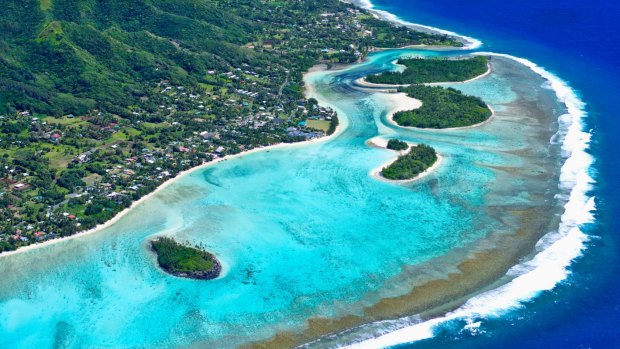
Credit: Alamy
By Craig Tansley
There's only one island in this world I know I could be marooned on; because I've already spent part of my life stuck on it. Rarotonga might be just 69 square kilometres in size, but that's more than enough for me. I can drive around the whole island in 30 minutes – 25 if I push my scooter hard – but I've never made it the whole way round without stopping for something.
And while other island destinations are unrecognisable from their former selves, Raro – at its heart – has barely changed a bit since I went barefoot here on my first day of primary school in 1979. Sure, there are some fancy hotels and restaurants now, but you're still more likely to run into a pig or a runaway chook than a traffic jam. And there's no high-rise anywhere on the island – there never will be either: no building can be taller than a coconut tree, it's part of the Cook Islands Constitution … seriously.
That's not to suggest this is some sleepy South Seas outpost – you'll find the liveliest bars in the South Pacific here (any island worth being marooned on must have some of these), especially come sunset at the bars along the west coast at Aorangi; but it's still easy to make a quick turn off the main coast road and find total privacy in a hinterland that's as mountainous as Tahiti's. I've been travelling the roads up here since I was a little kid and I'm still finding new roads to tucked-away valleys I've never seen before. I still get lost too – each year it happens more times than I care to admit.
Though for all its physical attributes – and I haven't even told you yet about the lagoons on Raro: they're as blue as Bora Bora's when the sun's shining – if you're planning on marooning yourself anywhere, you're going to want to like the people (you're sure going to spend a lot of time with them). And I reckon locals have always been Raro's best asset. Cook Islanders are the extroverts of the Pacific, there are no more genuinely gregarious characters on this planet.
I guess it's ironic that the best island I ever found – after a career spent visiting as many as I could – was the first one I ever knew. So go ahead and set me adrift and let me ride the tides to Raro. I'll happily live out my days just the way I started them. www.cookislands.travel
RHODES
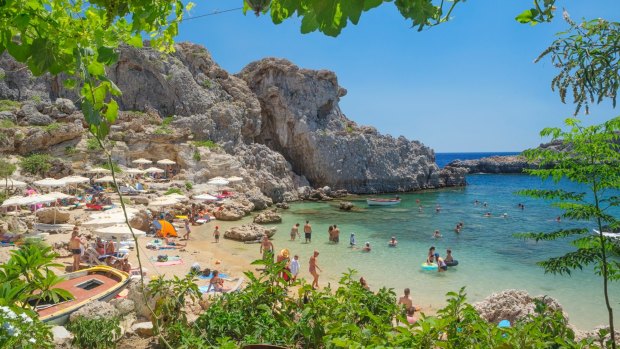
By Terry Durack
It's big, it's touristy, it has its own international airport, and it's not exactly Mykonos or Santorini, but the Greek island of Rhodes has a special place in my heart.
I first went there about a thousand years ago when I was 22 and had long hair down to my waist. I fell in love with the steep, whitewashed village of Lindos that tumbled down the mountainside beneath an acropolis dating to 300BC; with the long-eared donkeys; the slinky black cats; the little beachside restaurants on Lindos Bay with tables set into the sand and the menus reading "Greek home-made deeps".
But mainly, I fell in love with the island, an ancient, weather-beaten, wind-wracked, limestone rock that seems to have drawn artists, musicians and writers to it for centuries.
So when I headed back last year, everyone told me I wouldn't recognise the place. Weirdly, and surreally, it was just as I remembered, and only I had changed. The little village of Lindos is still absurdly picture-postcardish, the Acropolis doesn't look a day older, and the donkeys still have long ears. OK, so the black cats now have their own book deals and Hollywood agents, but they still pose against the whitewashed walls ready to razzle-dazzle your Instagram feed.
An island, any island, teaches you about resilience, toughness, and working with what you have; especially one that has been ransacked and plundered, built upon and put upon, and bought and sold more times than I've had fried calamari.
But Rhodes is still there. It stands, rock-solid, against the onslaught of Swedes, Germans and Brits. And the people of the island are still there. You can still find a family-run seafood restaurant like Stegna Kozas, on Stegna Beach, which was opened in 1932 by the grandfather of current owner, the bare-footed Dimitris Kozas.
While most tourist resorts switched to farmed seabass and imported calamari years ago, Dimitris still serves only wild fish caught off the island by the same fishing families who supplied his grandfather – most of whom turn up at the restaurant for a drink every evening.
So yes, there I was, decades later, tucking into an incredible variety of tiny little fried fish and drinking local wine while the sun set over the blue waters, and a cat curled around my ankles. That this can still happen; that an island inhabited since the Stone Age can still endure, is very reassuring. rodosisland.gr
ORKNEY ISLANDS
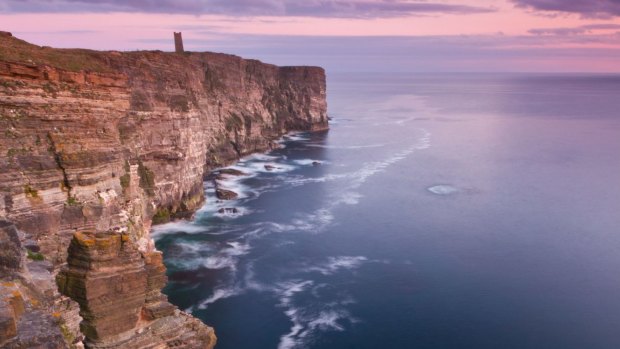
Credit: Alamy
By Julietta Jameson
I have a Scottish friend who once told me his people came from an island that got so windy, if you didn't keep low at certain times, you would be blown out to sea. I always insisted he was pulling my leg. Upon arriving on the Orkney Islands, an archipelago off the northern tip of Scotland, where the North Sea and the Atlantic Ocean meet, I soon discovered he wasn't.
It was a perfect late spring day, but even so, the flowering meadows were flattening under a strong breeze and the mane of the big black Friesian horse I was feeding an apple waved around as if he were a member of Bon Jovi in the '80s.
"Oh yes, this could be the place your friend spoke of," my Orcadian guide said cheerily. "We get tremendous gales, any time of the year."
The horizon backed him up. A panorama of farmland and cottages was devoid of trees of any great height. It gave it an immense sense of space and air, like you get under the large dome skies of Australia's outback, only here, there was a soft palette of heather purple, clover green and a backdrop of ocean as iridescent as the Mediterranean and a sky of pale blue and storybook fluffy clouds.
Despite its movement, there was a softness to the air.
"It's the Gulf Stream," my guide said. "It comes from the Gulf of Mexico. It means our winters are warm and our summers pleasant." You know that feeling when a place wraps around you and invites your heart to melt and your soul to open up? It felt like that. Like peace and freedom. I loved it.
Throughout my stay – I only had a day as I was on an Azamara cruise of the British Isles – we visited Highland Park, the Orkneys' famous 18th-century single malt whisky distillery where they still do things traditionally. And we saw the Ring of Brodgar standing stones, dating to 1560BC as well as other ancient Norse archaeological sites. We saw puffins, ducks and selkies and seaweed-eating sheep.
In between, there were long roads lined with stone fences, tiny cottages and little stores and the welcoming, yet reserved Orcadians.
They said the northern lights were magic here. But it was the wrong time for that. As we left, drifting past the white sand beaches on the Orkney fringes, I vowed to return to see them.
Not long after my visit, I happened to see on the internet that a baronial mansion, the one where my friend the Friesian horse lived among the flowering meadows, was for sale. I took a Lotto ticket. I didn't win. But I still dream of that sense of freedom and space in that powerful Orkney breeze. visitorkney.com
Julietta Jameson travelled as a guest of Azamara Club Cruises.
See also: The weirdest of the British Isles
Sign up for the Traveller Deals newsletter
Get exclusive travel deals delivered straight to your inbox. Sign up now.